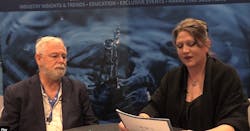Aug. 3, 2009 -- Nitrate pollution in rivers, lakes, reservoirs and underground aquifers is a major problem. However, researchers from Belgium, Malta, Poland, and the UK have developed a new low cost, environmentally friendly technology, known as 'NITRABAR' which substantially removes nitrate from groundwater. The project is an EC LIFE Environment Project that demonstrates the remediation of agricultural diffuse NITRAte polluted waters through the implementation of a permeable reactive BARrier.
Algal blooms have become an unfortunate feature of many water systems. In extreme cases, oxygen depletion results in the death of invertebrates and fish.
The NITRABAR system, designed by Prof. Kalin from the University of Strathclyde, consists of a trench containing a mixture of natural materials which form a permeable reactive barrier that removes nitrate from shallow groundwater immediately before it enters rivers or lakes.
A key feature of the NITRABAR system is its ability to convert dissolved Nitrates in the groundwater to harmless Nitrogen gas through the action of bacteria.
A team of experts, led by Professor Kalin, has been collecting monitoring data at a trial site in Ballymena, N. Ireland since early 2008 and results indicate that nitrate is being effectively removed within the barrier, with concentrations at the inlet being reduced by over 90%.
Now that the science has been proven and the environmental and financial benefits have been calculated, the only outstanding issue is funding.
Further information is available at the NITRABAR website (www.nitrabar.eu).
The NITRABAR Project has been made possible due to the contributions of the partners involved and the contributions of the LIFE financial instrument of the European Community.
LIFE is the EU's financial instrument supporting environmental and nature conservation projects throughout the EU, as well as in some candidate, acceding and neighboring countries. Since 1992, LIFE has co-financed some 2,750 projects, contributing approximately €1.35 billion to the protection of the environment. Visit http://ec.europa.eu/environment/life/ for more information.
###


